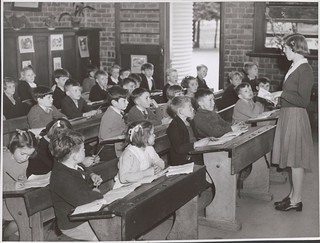Social media; helping to connect people with mutual interests all around the world and providing a gateway for people to learn, discuss and share. In today’s society it plays a massive role in almost everybody’s lives and yet, if misused, it can be fatal. In the teaching profession, being careful on social media is a critical part of being professional. Social media can present both challenges and opportunities for a teacher and each is left to form their own opinions on the matter.
In order to be professional, teachers must abide by the GTC Scotland’s code of conduct. Although the GTC acknowledge and respect the private lives of teachers, it is still vital to consider how personal behaviour on social media can impact and essentially damage one’s fitness to teach. When considering the online presence of a professional teacher it is important to try to highlight opportunities that this can present and not just focus on challenges it can cause. However in order to seize these opportunities it is likely that the teacher will either have to find an equal balance between professional and personal online activity or set up a totally separate account that can be used for professional purposes. An example of an opportunity that social media can bring to the classroom is the idea of being able to share the work of your pupils around the world with various other schools and classes via the internet. Social media can provide an online space where schools, pupils and teachers are able to connect with each other and in turn share, learn and form global relationships. Social media can essentially be transformed into a global classroom if used properly. This link via social media can also allow children to form global friendships through a “pen pal” system. In my own experience I have seen this done and become a huge success. This idea of the teacher using social media as a method for children to discuss their learning and school life with another child from a different part of the world is only one of the amazing opportunities that can be brought about it.
Not only can social media be used to develop communication on a global level, it can be used a much smaller scale and essentially just be used for classmates to communicate with each other. For example, when children are conducting research for group projects they can use social media to share their finding with peers within their group thus creating a much more efficient method of sharing and learning. As well as this, children will also be able to share this information by sending it to their class teacher thus allowing the teacher to watch over the pupils’ work online. By using social media in a classroom, this will also provide children with the online experience and develop their computing skills. This new understanding of social media and the type of etiquette expected when using it will benefit children as social media is ever growing and is playing a much bigger part in society every day.
On the other hand, social media can be temperamental and cause some issues when used in education. Firstly, it is important to understand that once something has been posted online it is on there forever, even if the post is deleted. As a teacher this fact must be kept in mind at all times as well as the GTC’s code when online, especially on social media. One potential problem for teachers using social media is that of their personal life being discovered by pupils. Although it is important for a teacher to be friendly and approachable to children, it is important that boundaries are kept and the teachers’ privacy remains separate from their professional life. Curious children may search for their teacher on social media sites and possibly try to communicate with them via this form. Any form of communication between teacher and pupil is not permitted unless in an appropriate school space. However, there are measures that can be taken to minimise the risk of this type of issue. Making all social media accounts private will help reduce the chances of pupils discovering a teacher’s private life online. Also, the account could be set up using a nickname or middle name in order to make it harder for children to trace their teachers on social media.
There can also be potential risks when using social media with a classroom environment as well as privately. The world of social media is vast with all sorts of things being posted on it. Unfortunately, there is material online that is in no way suitable for children and the classroom. Therefore when using social media, teachers run the potential risk of accidentally accessing some of this content. All it takes is an accidental click on the wrong link or webpage and a teacher’s career can be put on the line. Unfortunately, for this reason, social media can bring potential danger to the classroom and is considered by some to be left outside of this environment.
Overall, I feel that with society advancing and developing every day it is important for teachers to keep up with these changes to ensure that a child’s learning experience is up-to-date and therefore fully beneficial. With social media being a key component in this everyday advancement I feel that it is important for teacher’s to have a positive attitude towards online activity and try to fully embrace social media and all of the useful resources that it brings. Having said this, it is also equally important to always bear in mind the potential dangers of the Internet and ensure that the necessary precautions are taken to ensure not only the safety of children, but also that of the teacher themselves. However, teachers should not let these hypothetical risks scare them away from using the Internet. If utilised fully and properly, social media can be a powerful learning tool that can benefit both pupil and teacher.


